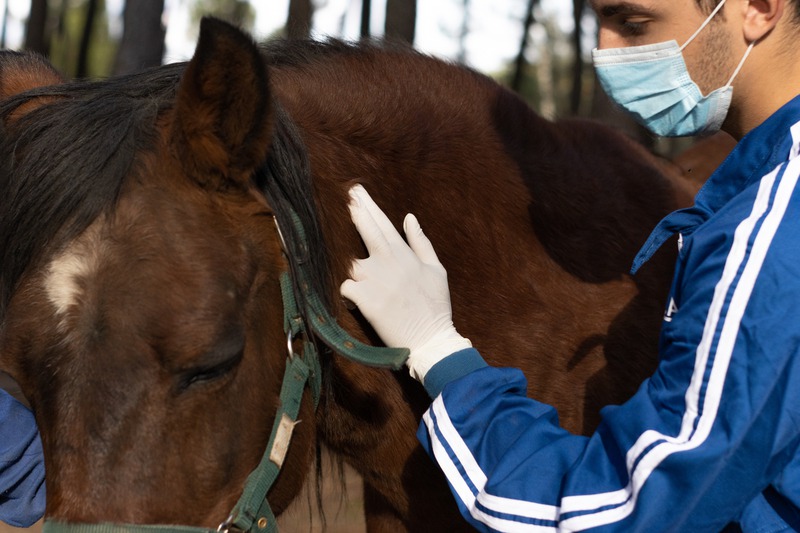When it comes to maintaining the health of farm animals, farmers and veterinarians must work together like a well-oiled machine. After all, healthy livestock is the backbone of a thriving farm. One of the most advanced tools in the veterinarian arsenal is diagnostic imaging. You might think of X-rays when your dog swallows something they shouldn’t, but this technology goes way beyond simply spotting indigestible objects in household pets. Let’s chat about how diagnostic imaging is a game-changer for farm animal health.
The Essentials of Diagnostic Imaging
Diagnostic imaging encompasses a variety of techniques used to take a peek inside an animal’s body without the need for surgery. It’s the secret agent of veterinary medicine, uncovering what can’t be seen with the naked eye. Let’s break down the main types:
-
X-rays: Good old-fashioned X-rays are often the first step. They show the structure of bones and can reveal fractures or abnormalities.
-
Ultrasound: This technique uses sound waves to create images of soft tissues. It’s perfect for checking out organs and detecting pregnancies without a hitch.
-
Magnetic Resonance Imaging (MRI): MRI uses powerful magnets and radio waves to create incredibly detailed images of both hard and soft tissues.
-
Computed Tomography (CT) scans: CT scans provide a 3D view by taking multiple X-ray slices, which is excellent for a comprehensive look at the body’s structure.
The Lifesavers of the Herd
Diagnostic imaging is not just for the coolest of tech. It’s a lifesaver, quite literally. Here’s why farmers and vets swear by it:
-
Finding the Hidden Culprits: Infections and diseases often lurk out of sight. Imaging helps veterinarians zoom in on the problem, whether it’s a lung infection in a cow or an unexpected growth in a pig’s belly. By catching these problems early, treatment can begin sooner, which means a happier, healthier animal.
-
Breeding and Reproductive Health: Ultrasound is the VIP in reproductive health. It can confirm pregnancies, count litter sizes, and even pinpoint reproductive issues before they become serious. For farmers managing breeding programs, this information is priceless.
-
Orthopedic Care: Imagine a sheep that can’t walk properly or a calf with a limp. For an orthopedic vet, diagnostic imaging is essential. It reveals fractures, bone diseases, and joint disorders that can impact an animal’s well-being and productivity. With accurate diagnoses, vets can recommend the right splints, surgeries, or treatments to get these critters back on their feet.
Case Studies
Let’s talk about how diagnostic imaging has been a hero in specific scenarios. Here’s how it’s made a world of difference on the farm:
-
Spotting Trouble in Horses: Colic is a serious problem for horses, but with ultrasounds, veterinarians can quickly detect abdominal issues. This speeds up the decision-making for possible surgeries and treatments, drastically improving survival rates.
-
Mending Bones and More: Farmers can’t afford to lose valuable livestock to treatable injuries. With X-rays and CT scans, vets can devise precise treatment plans for fractures or joint problems. It’s not just about healing; it’s about getting animals back to their day jobs as efficiently as possible.
-
Saving the Goats: A local goat vet in Meadow Vista, CA, using diagnostic imaging, quickly identified a tiny piece of metal lodged in the goat’s hoof. With a simple surgery, the goat was back to hopping happily with its herd.
Prevention in Farm Animal Health
Remember the old saying, “an ounce of prevention is worth a pound of cure”? Well, it couldn’t be truer in farm animal care. Here’s how diagnostic imaging helps with preventative measures:
-
Regular Health Checks: Annual or semi-annual scans help catch issues long before they become bigger health crises.
-
Performance Monitoring: For horses and other performance animals, imaging can monitor ongoing health to ensure they’re in top form for their tasks.
-
Genetic Defect Identification: Some animals carry hereditary conditions that, if identified early, can be managed or bred out of future generations.
Technology at the Heart of Veterinary Care
As we look ahead, the future of diagnostic imaging in veterinary medicine seems brighter than ever. The technology is constantly evolving, meaning even better care for farm animals. Let’s touch upon some of the advancements:
-
Portable Devices: Vets in the field are now using portable ultrasound and X-ray machines. It’s like bringing the vet clinic right to the barn door, allowing for on-the-spot assessments.
-
Better Imaging Quality: Sharper images mean more accurate diagnoses. Improvements in imaging quality help vets spot conditions they might have missed with older machines.
-
Faster Results: Time is of the essence, and modern imaging machines deliver rapid results. This can be the difference between a treatable condition and a life-threatening situation.
-
Integration with Other Technologies: Diagnostic imaging doesn’t work alone. It’s part of a network that includes electronic health records and telemedicine. These integrations mean more cohesive care for animals, no matter where the farm is located.
What About Our Furry Friends
Now, how does all this tech apply to smaller companions like cats and dogs? They benefit, too. For example, a cat and dog CT scan can unveil complex health issues within minutes, helping vets make quick calls on treatment plans.
Final Thoughts
In our journey through the fields of farm animal health, we’ve seen how invaluable diagnostic imaging is for vets and farmers. It’s not just a fancy tool; it’s a lifeline for livestock, ensuring early detection, effective treatment plans, and the ongoing health and productivity of the herd. With the constant advancements in technology, the future of farm animal care is looking healthier and brighter than ever. So, next time you see a thriving farm, you can bet that behind the scenes, diagnostic imaging played a part in keeping those animals lively and well.

